Brent Crude Oil Price Forecast for 2023
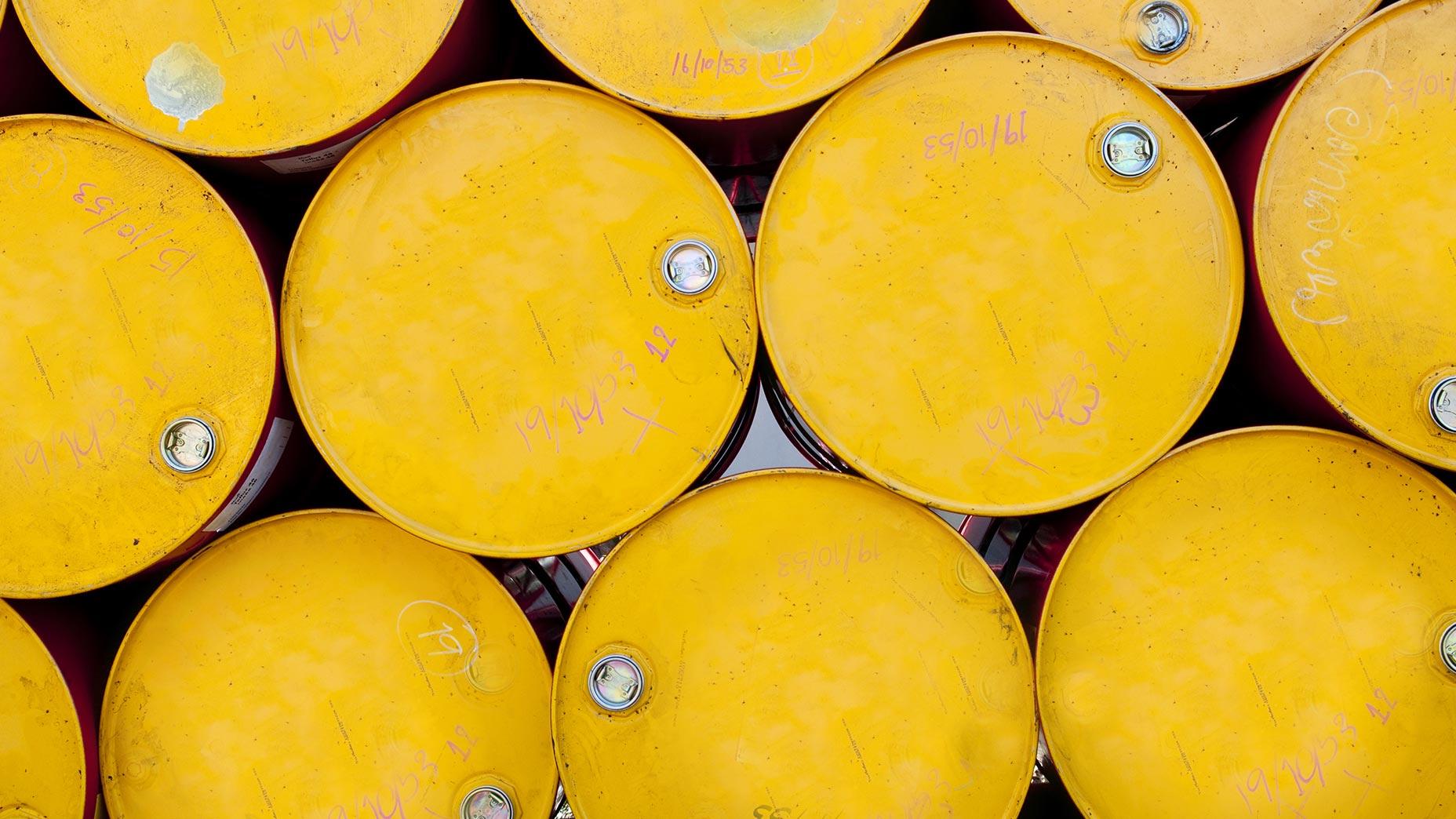
9 minutes for reading
In 2022, the price of a barrel of Brent crude oil reached a 14-year high at 138 USD. However, by March 2023, the price dropped 49%, down to 70.17 USD per barrel. At the time of writing, the quotes began to recover, rising to 88 USD.
In this article, we will explore the key factors affecting oil price fluctuations. We will aim to assess whether the quotes could rise in the next few months by providing a technical analysis of the price chart and sharing 2023 oil price forecasts from experts.
How Brent crude oil prices have changed over 1971-2023
Contracts for Brent crude oil supplies started to trade at the London International Petroleum Exchange in 1971. Until 1972, the quotes hovered on average slightly above 3 USD, occasionally reaching the level of 3.6 USD per barrel. However, already in 1973, they leapt up from 3 to 12 USD per barrel. The surge was driven by the decision of the Organization of the Petroleum Exporting Countries (OPEC) to impose an embargo on oil exports to the US and Western countries.
From 1974 to 1978 inclusive, the price of oil gradually increased from 10.11 USD to 14.98 USD. In 1979, amid the Islamic Revolution in Iran, oil prices soared from 13 USD per barrel in February to 39 USD in December.
From 1980 to 1985 inclusive, the quotes gradually declined from 36.83 USD to 27.25 USD, falling to 14.80 USD in 1986 due to excess production and reduced demand caused by the general economic environment. From 1987 to 1990 inclusive, they changed the direction of movement, reaching the level of 23.76 USD.
In early 1990, oil prices remained stable at the level of 18 USD but surged above 41 USD in August amid the Iraqi invasion of Kuwait. A strong depreciation was observed during the Asian financial crisis in 1998, with the price dropping from 17 USD in January to 10 USD in July. In September 1999, OPEC decided to reduce oil output by 1.25 million barrels per day for several months, thereby enabling the quotes to rise to 17.14 USD before the end of the year and reach 28.66 USD in 2000.
From 2001 to 2003 inclusive, the price of oil climbed from 24.41 to 28.83 USD per barrel. Another surge occurred from 38.26 to 72.44 USD between 2004 and 2007. In July 2008, the price of Brent reached a record 147.50 USD, but in December, it plummeted to 36.20 USD due to the global financial crisis.
From 2009 to 2011 inclusive, the cost of a barrel experienced a recovery and reached 126 USD. The quotes were in a sideways range until November 2014, rising to 120 USD and falling below 95 USD. In 2015, given the lifting of sanctions on Iran, China’s weak economic growth, and OPEC’s refusal to reduce oil production, the prices have seen a sharp decline.
In 2016, oil-exporting countries announced output cuts of 1.2 million barrels per day to stop the depreciation of the commodity. This move, among others, allowed oil quotes to keep rising until mid-2018, reaching 86.71 USD. But with OPEC announcing a gradual increase in oil production in June 2018, the prices went down, dropping to 50.29 USD per barrel in six months.
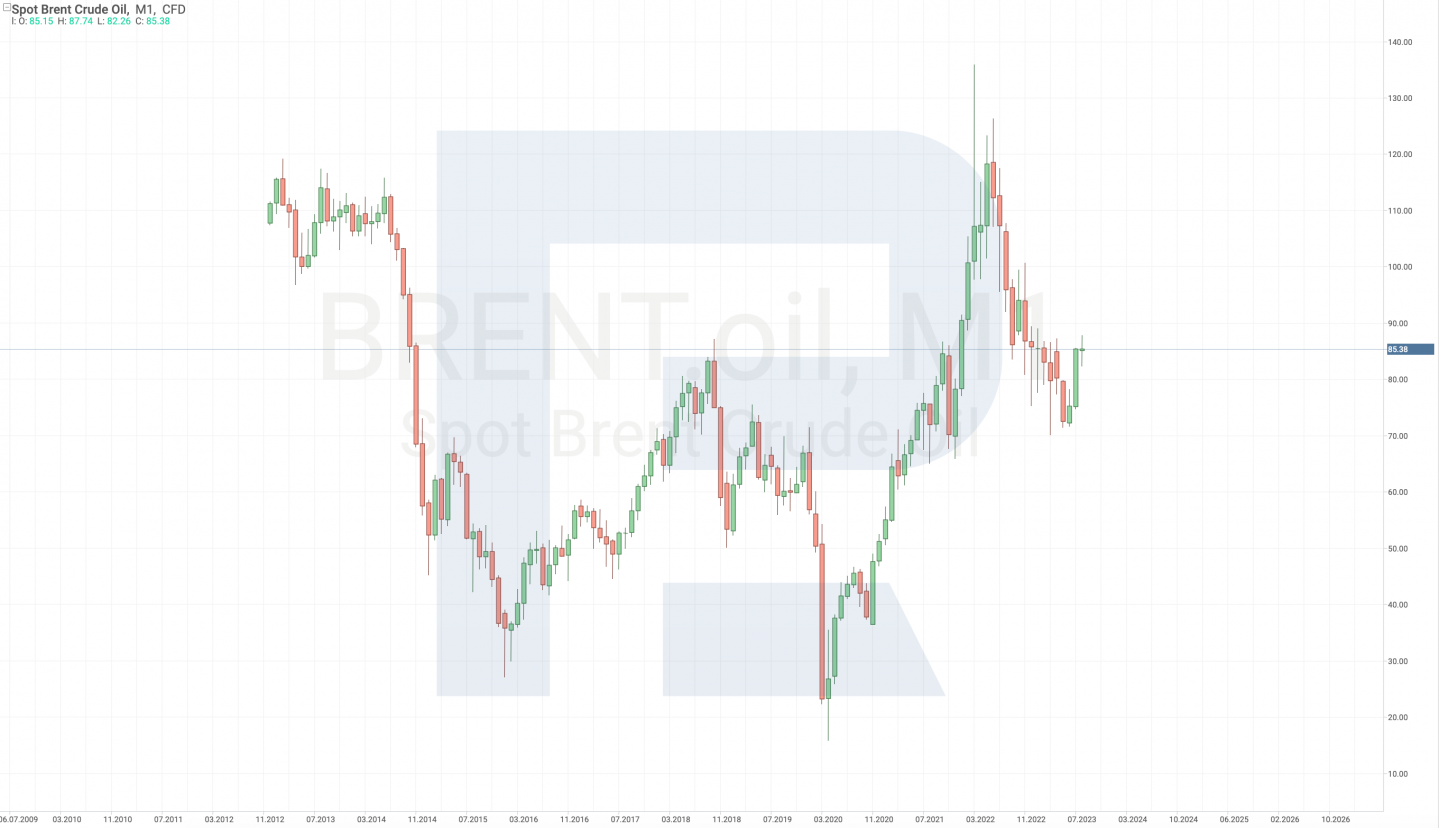
In 2020, due to the COVID-19 pandemic, the prices were headed downwards, dropping to 16.01 USD in April. In 2021, lockdown restrictions were gradually eased, and OPEC+ announced a reduction in production by 1.4 million barrels per day. This led to Brent beginning to recover and reach its 14-year high of 138.03 USD. However, in 2022, the prices began to tumble amid a sharp increase in the US petroleum reserves and mounting concerns over a global economic recession, falling to 75.16 USD in December.
In the first six months of 2023, Brent quotes were within the sideways range of 71-86 USD.
Factors affecting the price of oil
- Geopolitical instability. Local military conflicts, full-blown war, sanctions, and diplomatic tensions in key oil-producing regions – these factors significantly affect oil deliveries. For example, attacks on oil facilities in Saudi Arabia on 14 September 2019 caused a temporary decrease in the volume of supplies and a rise in the price of oil from 60.12 to 69.64 USD per barrel
- OPEC and OPEC+ policy. These organisations play an important role in stabilising the commodity cost in global markets as they can regulate the output and thereby control the supply. For example, In April 2020, OPEC+ announced record output cuts of 19 million barrels per day, enabling oil quotes to rise from 20 to 50 USD by the end of the year
- Global economic growth. Demand for energy carriers typically rises during periods of economic growth, pushing prices up. For instance, high economic growth rates in China and India in 2000-2008 led to robust demand for oil, with prices soaring from 22 to 140 USD. During economic downturns, the situation is the opposite as was the case during the COVID-19 pandemic
Why the price of Brent crude oil may rise by the end of 2023
Reduced supplies
Saudi Arabia announced an additional output cut of 0.9 million barrels per day, down to 9.06 million in July. The restriction will extend to include September. Russia will reduce its oil exports by 0.5 million barrels per day in August and 0.3 million barrels per day in September. It is worth noting that the output of the OPEC+ countries sank by 1.2 million barrels per day in July, to 50.7 million, marking the lowest reading since October 2021.
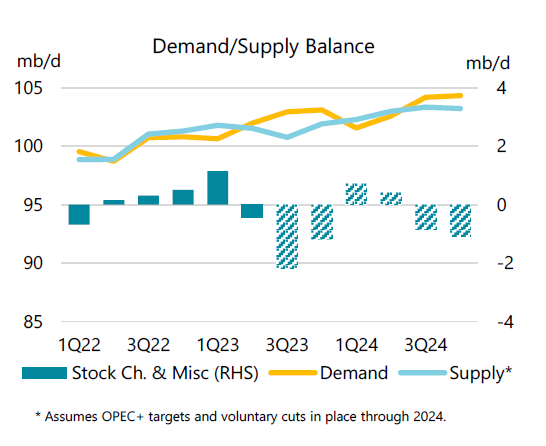
Increased demand
A report by the International Energy Agency (IEA) suggests that global oil demand may increase to 2.2 million barrels per day in 2023, up to 102.2 million, with China creating 70% of the demand. According to the National Bureau of Statistics of China, the country’s oil refineries processed a record 14.7 million barrels of crude oil per day in the first six months of 2023. The previous record was set in 2021 at the level of 14.1 million barrels per day. As noted by Bloomberg, the global economy is consuming more oil than ever.
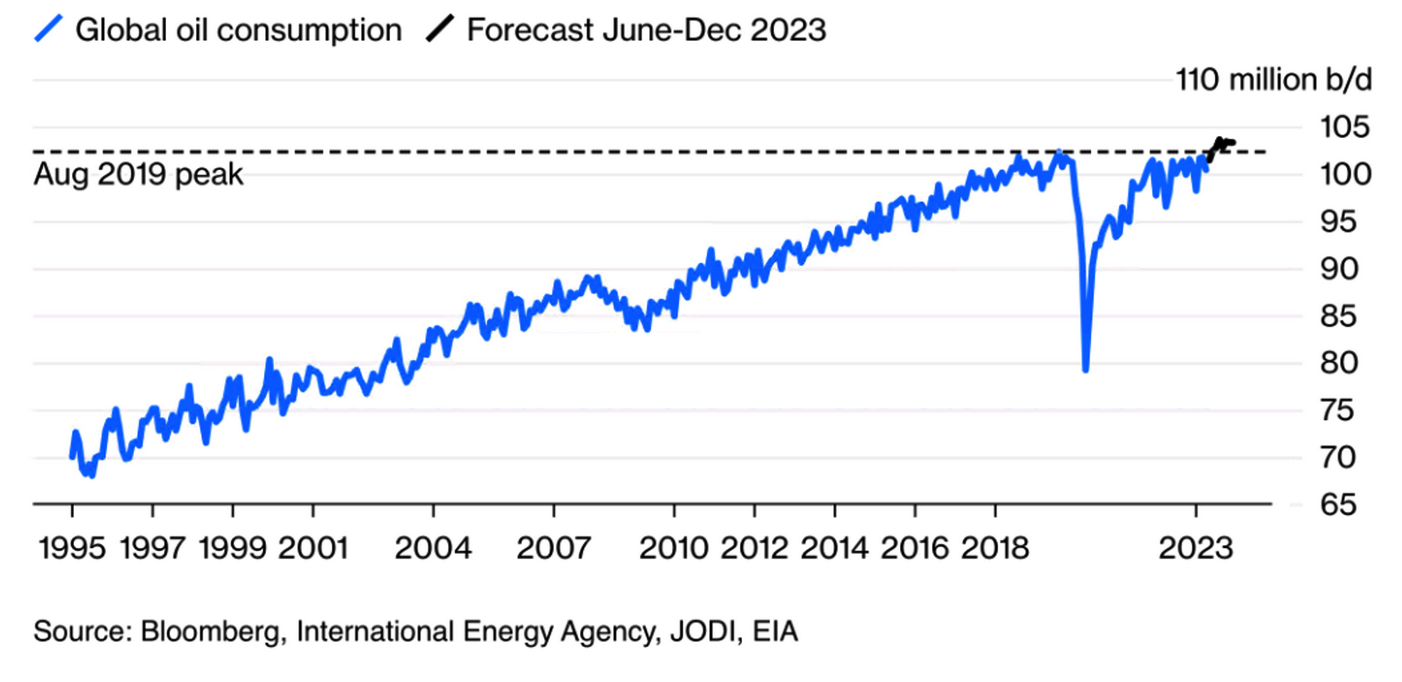
Dwindling reserves
According to the OPEC data, commercial oil stocks in the member countries of the Organisation for Economic Co-operation and Development (OECD) increased by 4.2 million barrels in June this year, but they still remain below the five-year average by 74 million barrels. As reported by Reuters, crude stocks at the Cushing storage hub in Oklahoma fell by 2.9 million barrels in the week to 14 July, marking the sharpest decline in a year and a half. US gasoline stocks were at 217.6 million barrels, the lowest level since 2015.
Technical analysis of Brent oil prices
From 15 March to 28 June 2023, sellers struggled to push the price below the important support level of 70 USD per barrel. Nevertheless, buyers successfully defended this area from a breakout, and the price is currently on the rise, testing the nearest resistance level of 87 USD.
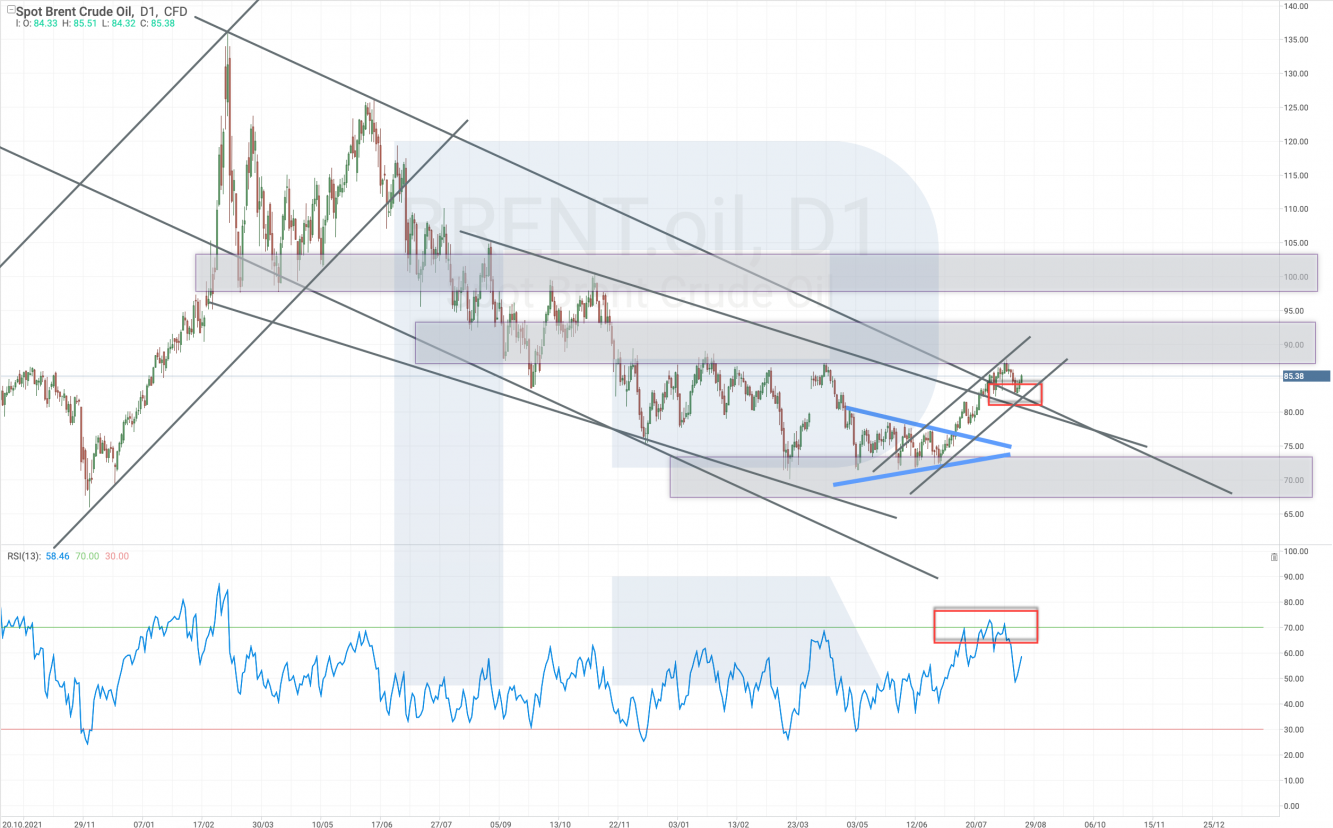
Crude oil quotes have only recently stopped hitting the lows since a downtrend started at the beginning of 2022, replacing them with new maximums surpassing previous peaks. This price behaviour might signal the end of the bearish trend and the start of an uptrend.
Furthermore, the quotes left the boundaries of a long-term descending channel, which also confirms the possible end of the bearish trend. The growth target in this scenario could be 100 USD, the nearest resistance level after a breakout above 90 USD.
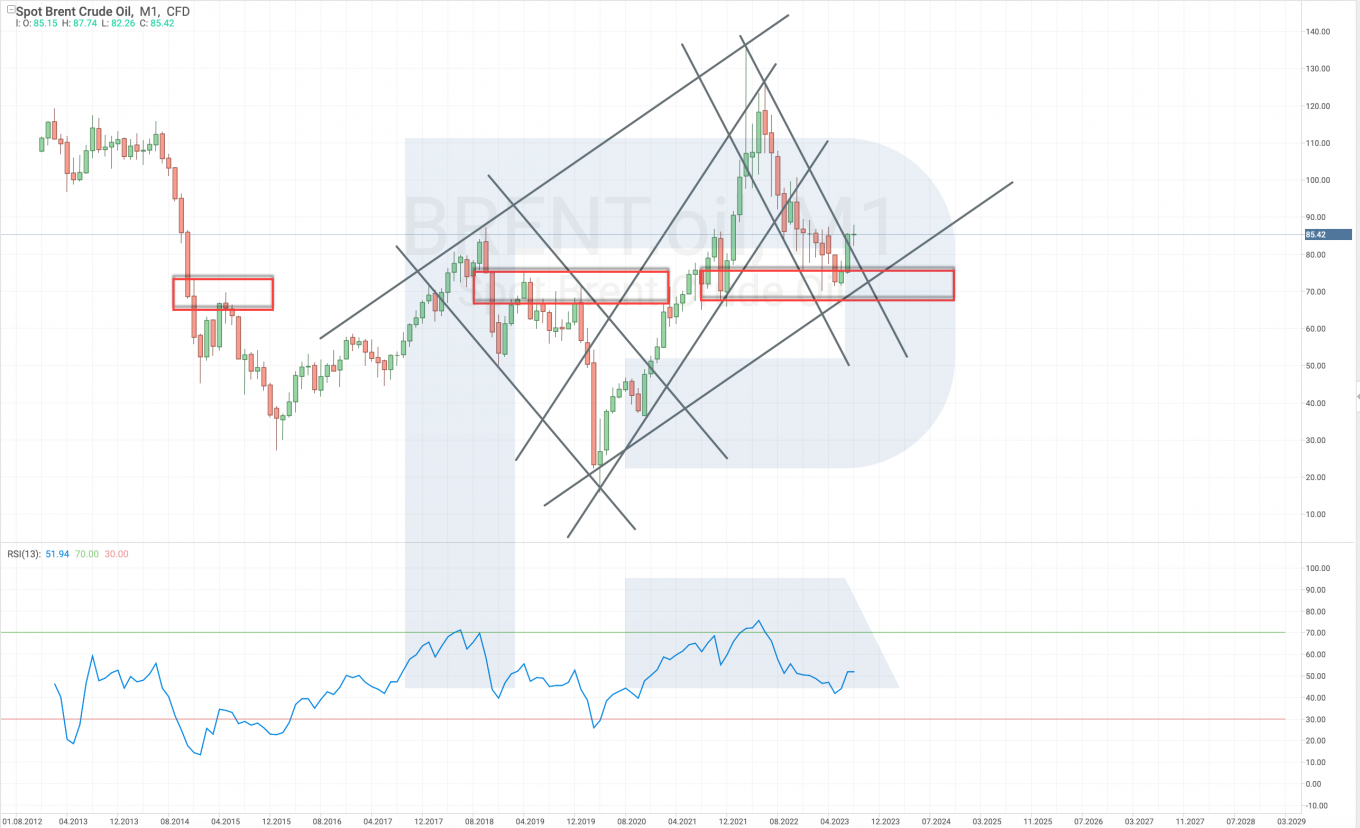
On 17-18 August, the price already tested the upper boundary of the descending channel and rebounded from it, indicating buyer pressure. After multiple tests of the overbought area, the RSI values dropped to 50, securing above it, thereby confirming the bullish sentiment. The buyers might have to face a negative scenario if the price falls below 70 USD, which will mean a breach of the lower boundary of a long-term ascending channel. In this case, the decline target could be 52 USD.
Brent oil price forecasts for 2023-2024
- Goldman Sachs analysts forecast crude oil prices at 86 USD by the end of this year and approach 91 USD in 2024. They note that the increase in supply volumes from Iran and Russia exceeds expectations
- Rystad Energy experts suggest that prices may exceed 100 USD by the end of 2023 due to potential supply cuts
- The international rating agency Fitch Ratings believes a Brent barrel might cost 80 USD at the end of this year and 75 USD in 2024
- JPMorgan forecasts the price of 81 USD per barrel this year and 83 USD per barrel in 2024. Analysts say that the global crude oil supply might surpass record demand, and the accumulated reserves could smooth out possible price surges
- UBS Bank experts speculate there is room for growth of crude oil quotes, and by the end of this year they might reach 95 USD
- Ole Hansen, Head of commodity strategy at Saxo Bank, expects prices to fluctuate between 85 and 90 USD by the end of this year. One of the reasons is the decrease in Saudi-Arabian production
Summary
A wide range of factors affect the price of oil, making its movements extremely volatile. The efforts made by oil-exporting countries and their partners to limit the supply of oil are being balanced out by a rise in oil demand, which is particularly noticeable in rapidly growing or emerging markets.
Expert forecasts differ. While some project a decrease in stocks and commodity supplies, others argue that the current reserves are sufficient to mitigate price fluctuations. The maximum growth levels are seen at 95-100 USD per barrel, with no expected drop below 80 USD by the end of 2023.
Technical analysis suggests the end of the downtrend that has been developing since the beginning of 2022, and an attempt to rise to 100 USD, provided that the bulls hold the key support level at 70 USD following a downward breach.
* – Past performance is not a reliable indicator of future results or future performance.
The material presented and the information contained herein is for information purposes only and in no way should be considered as the provision of investment advice for the purposes of Investment Firms Law 87(I)/2017 of the Republic of Cyprus or any other form of personal advice or recommendation, which relates to certain types of transactions with certain types of financial instruments.


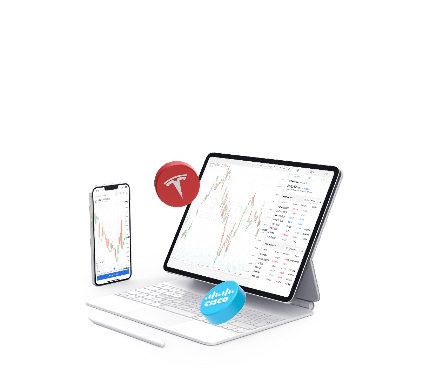
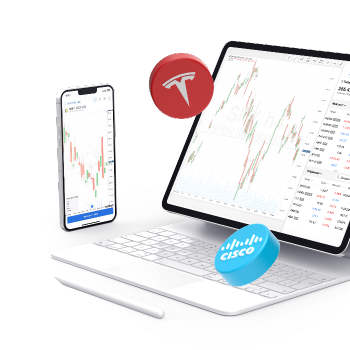








 are complex instruments and come with a high
are complex instruments and come with a high  of losing
of losing  rapidly due to
rapidly due to  . 65.68% of retail investor accounts lose
. 65.68% of retail investor accounts lose  when trading
when trading  with this provider. You should consider whether you understand how CFDs work and whether you can afford to take the high
with this provider. You should consider whether you understand how CFDs work and whether you can afford to take the high